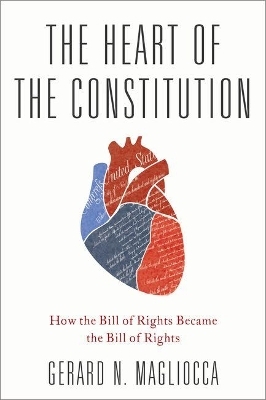
The Heart of the Constitution
Oxford University Press Inc (Verlag)
978-0-19-027160-2 (ISBN)
This is the untold story of the most celebrated part of the Constitution. Until the twentieth century, few Americans called the first ten constitutional amendments drafted by James Madison in 1789 and ratified by the states in 1791 the Bill of Rights. Even more surprising, when people finally started doing so between the Spanish-American War and World War II, the Bill of Rights was usually invoked to justify increasing rather than restricting the authority of the federal government. President Franklin D. Roosevelt played a key role in that development, first by using the Bill of Rights to justify the expansion of national regulation under the New Deal, and then by transforming the Bill of Rights into a patriotic rallying cry against Nazi Germany. It was only after the Cold War began that the Bill of Rights took on its modern form as the most powerful symbol of the limits on government power.
These are just some of the revelations about the Bill of Rights in Gerard Magliocca's The Heart of the Constitution. For example, we are accustomed to seeing the Bill of Rights at the end of the Constitution, but Madison wanted to put them in the middle of the document. Why was his plan rejected and what impact did that have on constitutional law? Today we also venerate the first ten amendments as the Bill of Rights, but many Supreme Court opinions say that only the first eight or first nine amendments. Why was that and why did that change?
The Bill of Rights that emerges from Magliocca's fresh historical examination is a living text that means something different for each generation and reflects the great ideas of the Constitution--individual freedom, democracy, states' rights, judicial review, and national power in time of crisis.
Gerard N. Magliocca is the Samuel R. Rosen Professor at the Indiana University Robert H. McKinney School of Law. He received his undergraduate degree at Stanford, his law degree at Yale, and spent one year as a law clerk for Judge Guido Calabresi on the United States Court of Appeals for the Second Circuit. Professor Magliocca is the author of three other books on constitutional law and lives in West Lafayette, Indiana.
Acknowledgements
Preface: The Bill of Rights
Introduction: The First Bill of Rights Day
Chapter 1: Fighting the Crown
Chapter 2: Opposing the Constitution
Chapter 3: Drafting the Amendments
Chapter 4: Wandering in the Wilderness
Chapter 5: Reconstructing the Union
Chapter 6: Justifying Imperialism
Chapter 7: Defending The New Deal
Chapter 8: Attacking The Führer
Chapter 9: Reinventing Judicial Review
Chapter 10: Waging the Cold War
Epilogue: A Sacred Relic
Appendix A: The English Declaration of Rights (1689)
Appendix B: The Virginia Declaration of Rights (1776)
Appendix C: The Universal Declaration of Human Rights (1948)
Bibliography
Notes
Index
| Erscheinungsdatum | 03.02.2018 |
|---|---|
| Verlagsort | New York |
| Sprache | englisch |
| Maße | 218 x 145 mm |
| Gewicht | 431 g |
| Themenwelt | Geschichte ► Allgemeine Geschichte ► Neuzeit (bis 1918) |
| Geisteswissenschaften ► Geschichte ► Regional- / Ländergeschichte | |
| Recht / Steuern ► EU / Internationales Recht | |
| Recht / Steuern ► Rechtsgeschichte | |
| Sozialwissenschaften ► Politik / Verwaltung ► Staat / Verwaltung | |
| ISBN-10 | 0-19-027160-4 / 0190271604 |
| ISBN-13 | 978-0-19-027160-2 / 9780190271602 |
| Zustand | Neuware |
| Haben Sie eine Frage zum Produkt? |
aus dem Bereich


